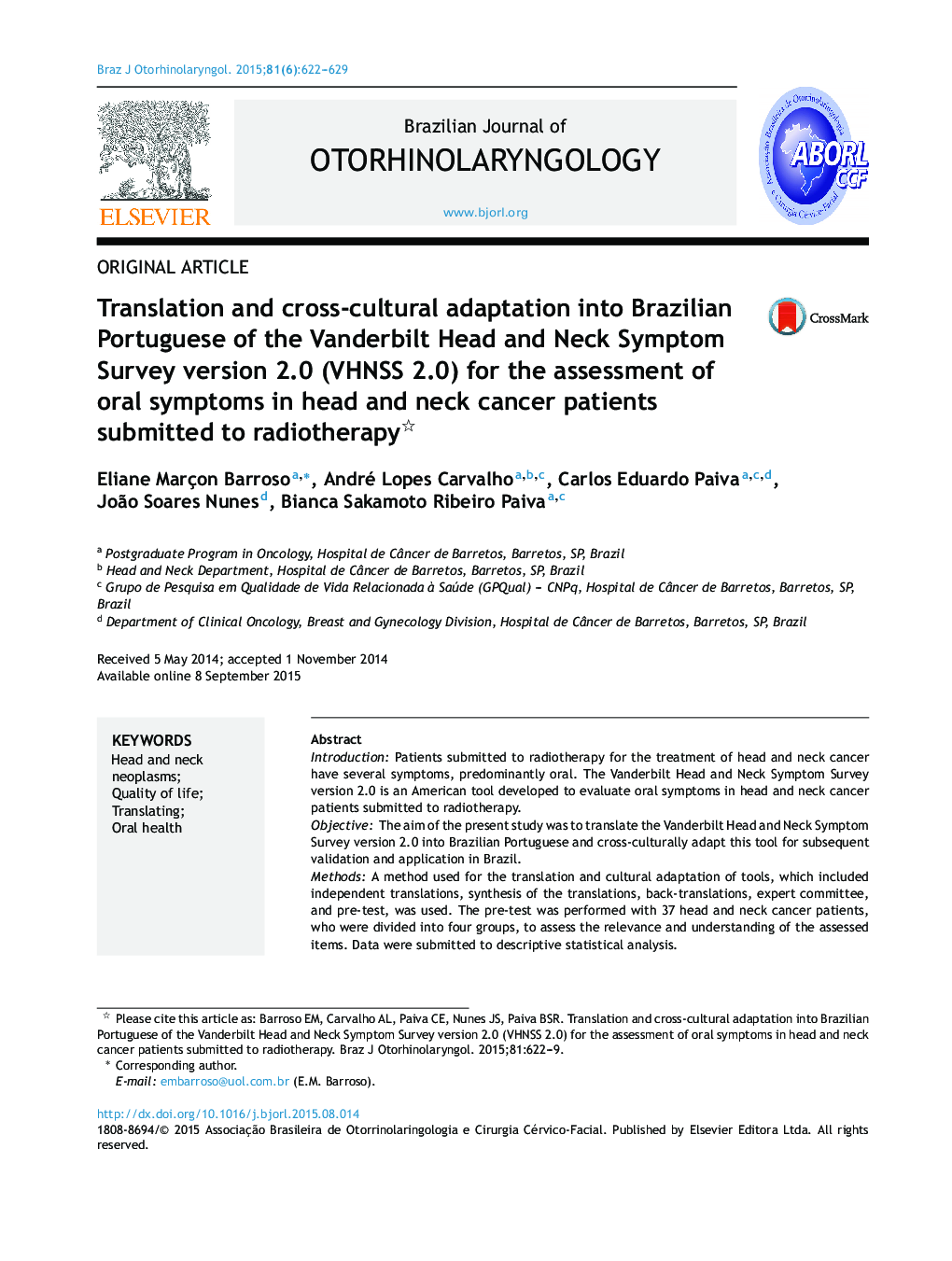| Article ID | Journal | Published Year | Pages | File Type |
|---|---|---|---|---|
| 4106259 | Brazilian Journal of Otorhinolaryngology | 2015 | 8 Pages |
IntroductionPatients submitted to radiotherapy for the treatment of head and neck cancer have several symptoms, predominantly oral. The Vanderbilt Head and Neck Symptom Survey version 2.0 is an American tool developed to evaluate oral symptoms in head and neck cancer patients submitted to radiotherapy.ObjectiveThe aim of the present study was to translate the Vanderbilt Head and Neck Symptom Survey version 2.0 into Brazilian Portuguese and cross-culturally adapt this tool for subsequent validation and application in Brazil.MethodsA method used for the translation and cultural adaptation of tools, which included independent translations, synthesis of the translations, back-translations, expert committee, and pre-test, was used. The pre-test was performed with 37 head and neck cancer patients, who were divided into four groups, to assess the relevance and understanding of the assessed items. Data were submitted to descriptive statistical analysis.ResultsThe overall mean of the content validity index was 0.79 for semantic and idiomatic equivalence, and it was higher than 0.8 for cultural and conceptual equivalence. The cognitive interview showed that patients were able to paraphrase the items, and considered them relevant and easily understood.ConclusionThe tool was translated and cross-culturally adapted to be used in Brazil. The authors believe this translation is suited for validation.
ResumoIntroduçãoPacientes submetidos à radioterapia para tratamento de câncer de cabeça e pescoço apresentam diversos sintomas, com predominância de sintomas orais. O Vanderbilt Head and Neck Symptom Survey version 2.0 é um instrumento americano que foi desenvolvido para avaliar sintomas orais em pacientes com câncer de cabeça e pescoço submetidos à radioterapia.ObjetivoTraduzir o Vanderbilt Head and Neck Symptom Survey version 2.0 e adaptá-lo culturalmente para subsequente validação e aplicação no Brasil.MétodoUm método de tradução e adaptação cultural de instrumentos foi utilizado, o qual inclui traduções independentes, síntese das traduções, retrotraduções, comitê de especialistas e pré-teste. O pré-teste foi realizado em 37 pacientes com câncer de cabeça e pescoço divididos em quatro grupos para avaliar a relevância e entendimento dos itens. Dados foram submetidos à análise estatística descritiva.ResultadosA média geral do índice de validade de conteúdo foi 0,79 para as equivalências semânticas e idiomáticas; e maior que 0,8 para as equivalências cultural e conceitual. A entrevista cognitiva mostrou que os pacientes foram capazes de parafrasear os itens e os consideravam relevante e de fácil entendimento.ConclusãoO instrumento foi traduzido e adaptado culturalmente ao Brasil. Nós acreditamos que esta tradução está apta para a validação.
